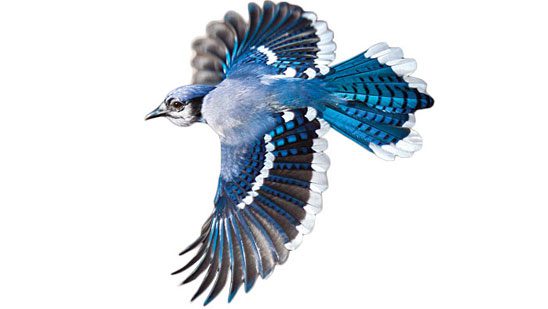Hidden Migrations of Common Species
By Hugh Powell
October 15, 2011
Ah, fall migration! Skeins of geese, confusing fall warblers, winter sparrows. Blue Jays.
“Most people don’t even think of Blue Jays as being migratory,” said Chris Wood, co-project leader for eBird at the Cornell Lab of Ornithology. Though many jays do stay put for the winter, some individuals head south, a pattern called partial migration. Uncovering such hidden routines among common birds is one of the most rewarding aspects of bird watching, Wood said.
Each fall Wood looks forward to watching hordes of jays migrate along nearby Cayuga Lake, where he has been keeping near-daily watches for five years running. In a single morning last year he counted 2,486 Blue Jays, each one patiently flapping southward just above the treetops.
“Ironically, we know less about what influences these movements of common birds than we do about something rare like a Cave Swallow,” Wood said. “In late October I’ll be able to look at the weather and tell you when to go out and look for the first Cave Swallow in the Northeast.” But because Blue Jays, flickers, chickadees, and the like are ubiquitous all year, it’s much less apparent when they’re moving. It gets even more tricky with birds like Blue Jays that may fly long distances to gather acorns or other foods, then return to their home territories for the night.
Records show plenty of other familiar species move en masse, too: counts of 36,000 Black-capped Chickadees on the Lake Ontario shore in 1961; 5,000 Northern Flickers skirting a Cape May, New Jersey, beach in 1937; 11,000 Cedar Waxwings in Duluth, Minnesota.
It’s easy to recognize migration when strange warblers appear in hedgerows or Dark-eyed Juncos show up at feeders. But lots more migration is happening right under our noses, Wood said-if we just keep track (see sidebar). The birds are here all the time, living their lives and waiting for someone to uncover their secrets.
If a daily jaunt to your favorite patch doesn’t fit your schedule, you can even start at the feeders right outside your window. Project FeederWatch’s more than 15,000 participants have been fueling scientific discoveries for 25 years.
Originally published in the Autumn 2011 issue of BirdScope.

All About Birds
is a free resource
Available for everyone,
funded by donors like you
American Kestrel by Blair Dudeck / Macaulay Library
